Hi GPODers!
We’re visiting Nancy Sarpola in Corvallis, Oregon today, and diving into another incredible fall garden. Nancy has submitted her garden several times over the years (December in an Oregon Garden, A Look Back at the Garden, Nancy’s Hillside Garden in Oregon, Through the Year in an Oregon Garden, and more), and she always has something new and exciting to share. From out-of-the-norm wonders to brilliant varieties of garden classics, every gardener will find something of note in her beds.
Hi from Oregon, Here are 10 photos taken in September, October and November in our zone 8b, Corvallis, Oregon garden.
The view up the hill as you enter through the gate, accented this time of year by a red salvia blooming on the right.
The second shot across the lawn was taken September 2nd. It features variegated ‘Norah Leigh’ phlox (Phlox paniculata ‘Norah Leigh’, Zones 4–8) front and center.
Honey bush (Melianthus major, Zones 8–11), chocolate cosmos (Cosmos atrosanguineus, Zones 7–11) and a pink flowering sedum (listed top to bottom).
An exotic-looking ‘Tara’ ginger lily (Hedychium coccineum ‘Tara’, Zones 7–11), a 6 feet tall ginger with a 10 inch tall flower spike.
Our Yoshino cherry tree (Prunus × yedoensis, Zones 5–8) as it turns brilliant orange on November 7. November is usually gray and rainy in Western Oregon but when the sun comes out, the Fall colors are wonderful!
A hydrangea relative, Chinese quinine or blue evergreen hydrangea (Dichroa febrifuga, Zones 8–10). It has blue flowers in summer but it’s most amazing season is Fall when these deep blue berries form.
‘Freckles’ winter flowering clematis (Clematis cirrhosa ‘Freckles’, Zones 7–9), which begins blooming in November and will bloom on and off all winter whenever the weather warms up just a little.
Eighth is a vignette in the garden that includes Heavy Metal Switch grass (Panicum virgatum ‘Heavy Metal’, Zones 4–9), annual purple perilla, and ‘Mardi Gras’ sneezeweed (Helenium ‘Helbro’ , Zones 4–8).
An amazing October-blooming perennial called long-tubed trumpet spurflower (Isodon effusus var. longitubus, Zones 6–8). It looks like a delicate salvia but blooms very well in mostly shade.
And finally Pink muhly grass (Muhlenbergia capillaris, Zones 6–10) in the late afternoon sun.
Thank you so much for sharing your stunning garden with us again, Nancy! Your designs and plant selections get more and more exciting over the years, and there is no season where your space lacks interest.
Have a garden you’d like to share?
Have photos to share? We’d love to see your garden, a particular collection of plants you love, or a wonderful garden you had the chance to visit!
To submit, send 5-10 photos to gpod@taunton.com along with some information about the plants in the pictures and where you took the photos. We’d love to hear where you are located, how long you’ve been gardening, successes you are proud of, failures you learned from, hopes for the future, favorite plants, or funny stories from your garden.
Have a mobile phone? Tag your photos on Facebook, Instagram or Twitter with #FineGardening!
Do you receive the GPOD by email yet? Sign up here.
Fine Gardening Recommended Products
The Nature of Oaks: The Rich Ecology of Our Most Essential Native Trees
Fine Gardening receives a commission for items purchased through links on this site, including Amazon Associates and other affiliate advertising programs.
The Nature of Oaks reveals what is going on in oak trees month by month, highlighting the seasonal cycles of life, death, and renewal. From woodpeckers who collect and store hundreds of acorns for sustenance to the beauty of jewel caterpillars, Doug Tallamy illuminates and celebrates the wonders that occur right in our own backyards. He also shares practical advice about how to plant and care for an oak, along with information about the best oak species for your area.
Attracting Beneficial Bugs to Your Garden, Revised and Updated Second Edition: A Natural Approach to Pest Control
Fine Gardening receives a commission for items purchased through links on this site, including Amazon Associates and other affiliate advertising programs.
This revised and updated edition of Jessica Walliser’s award-winning Attracting Beneficial Bugs to Your Garden offers a valuable and science-backed plan for bringing balance back to the garden. With this indispensable gardening reference—now updated with new research, insights, and voices—learn how to create a healthy, balanced, and diverse garden capable of supporting a hard-working crew of beneficial pest-eating insects and eliminate the need for synthetic chemical pesticides.











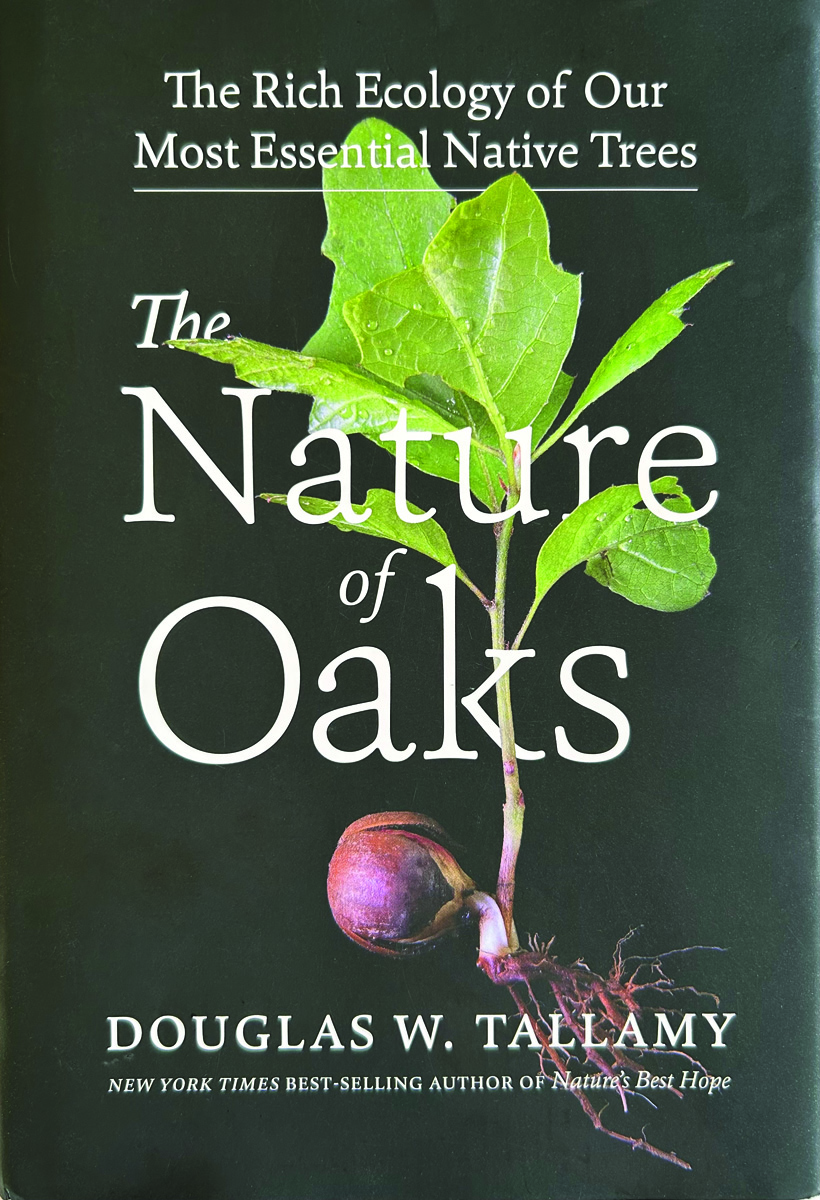



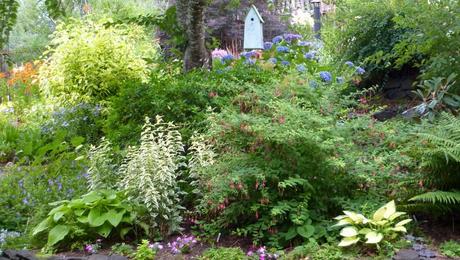
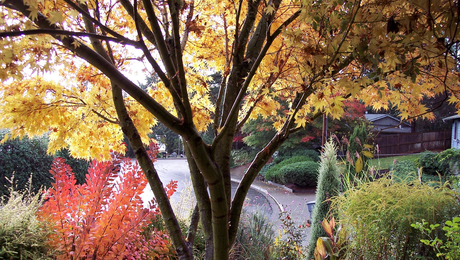
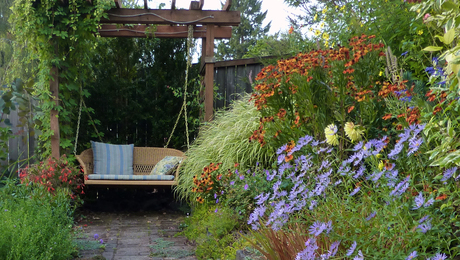
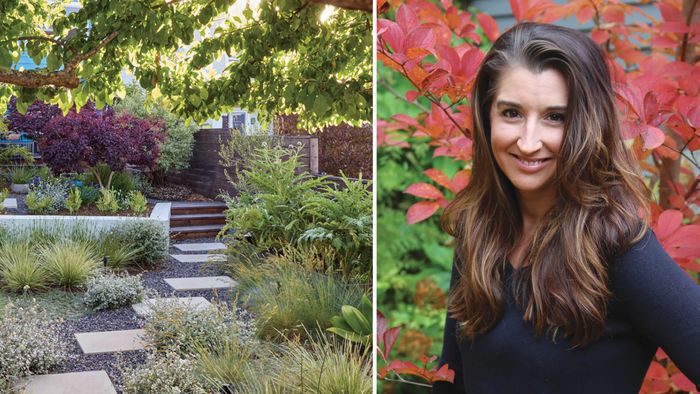
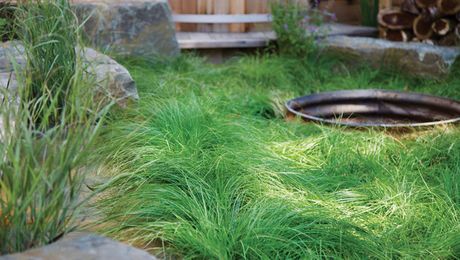
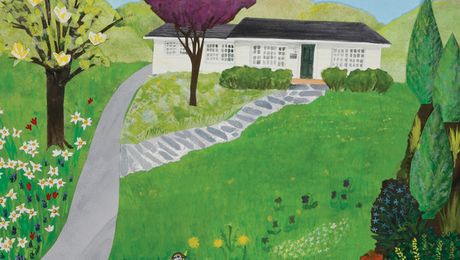


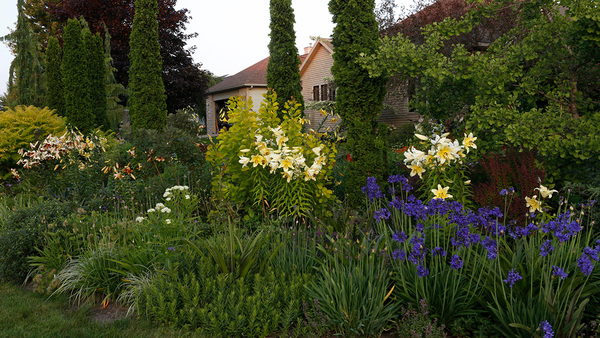



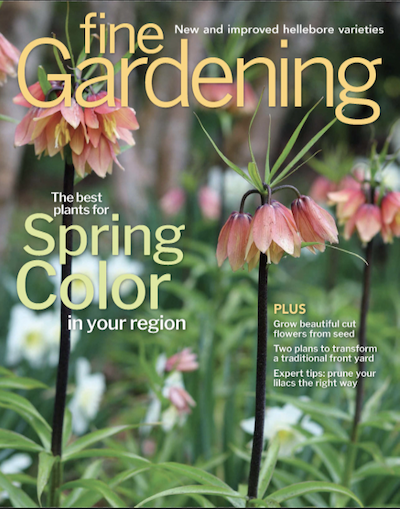




Comments
Great design! Beautiful color and texture combinations. There are many plants that I have never seen before. The ginger lilies with orange flower spike is gorgeous! Thanks for sharing! Happy holidays.
Absolutely gorgeous! (And so much fun to see unfamiliar plants that can be grown in a more forgiving zone than mine.)
Oh my gosh your garden is beautiful! I grew up in Albany, but now live in Central Oregon. I miss the lush look of a valley garden.
Nancy - stunning plants and combinations! Thank you for sharing!
Happy holidays to all. : - D
Thank you for sharing your beautiful fall inspired vignettes, Nancy. Phlox Norah Leigh is one of my favorite plants. What I wouldn't give to be able to grow Melianthus in the ground! Happy Holidays!
That chocolate cosmos... delicious! A marvelous garden!!
Stunning garden! Beautiful plants! Thank you Nancy for the virtual tour.
Log in or create an account to post a comment.
Sign up Log in